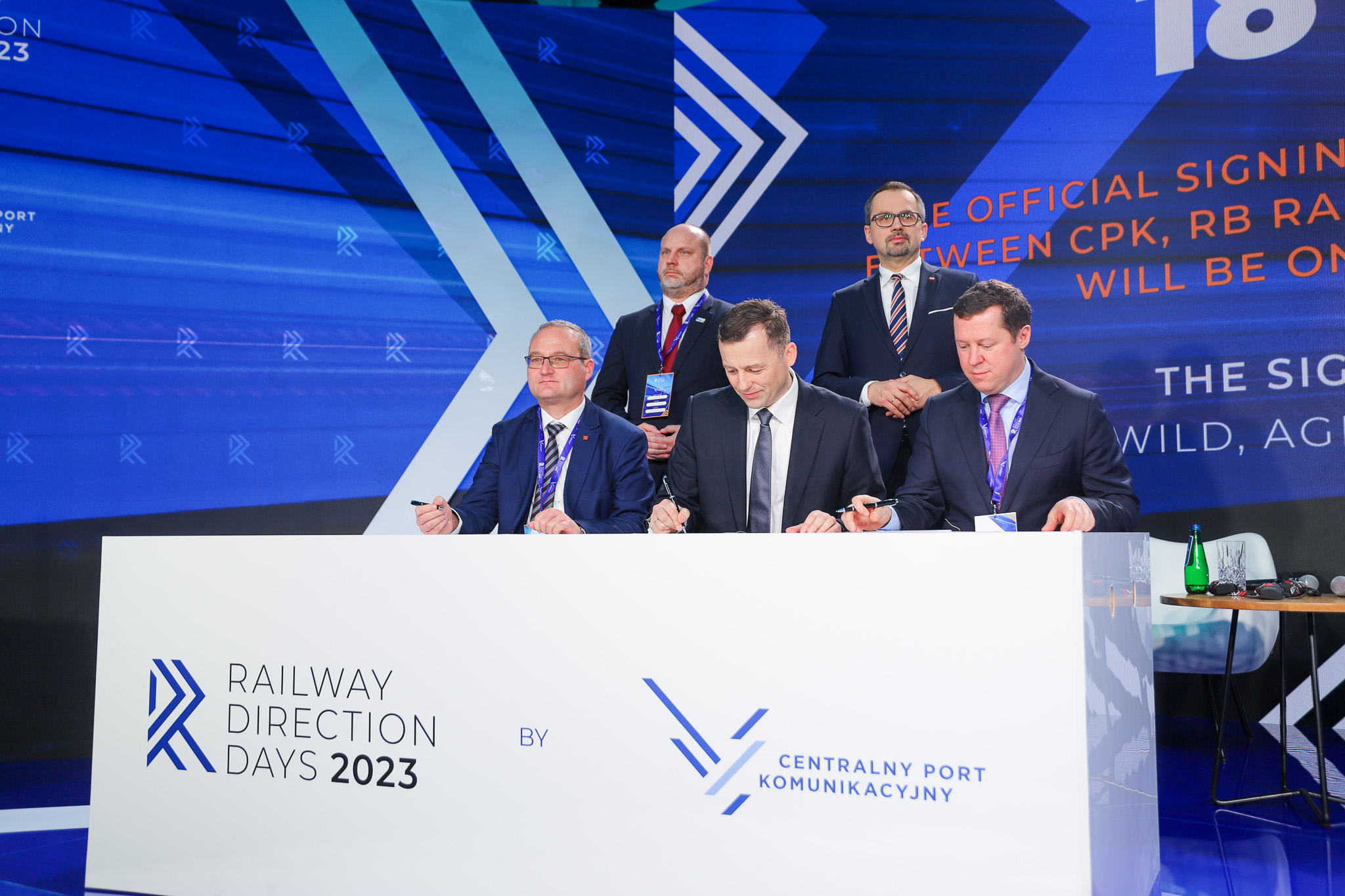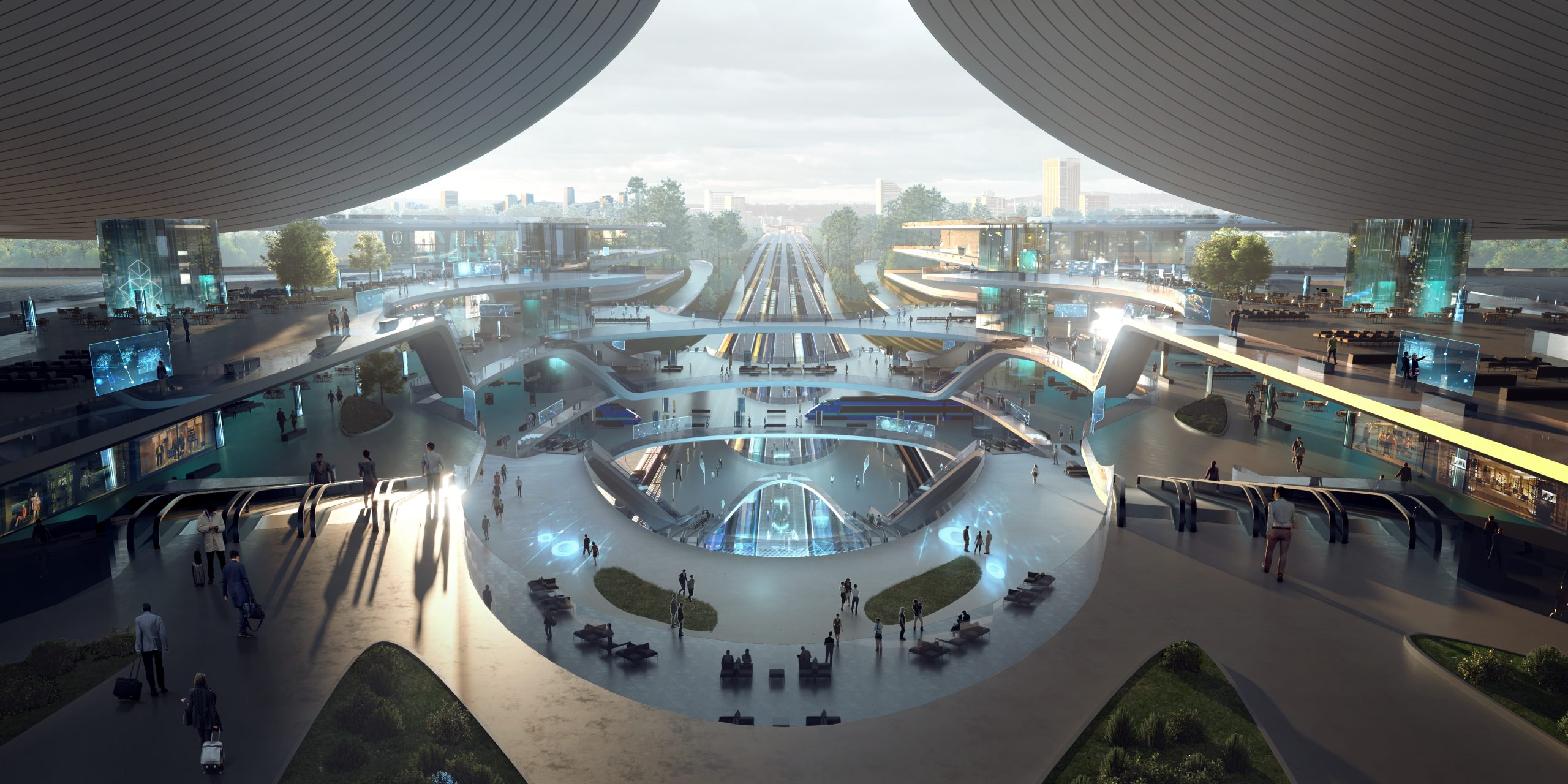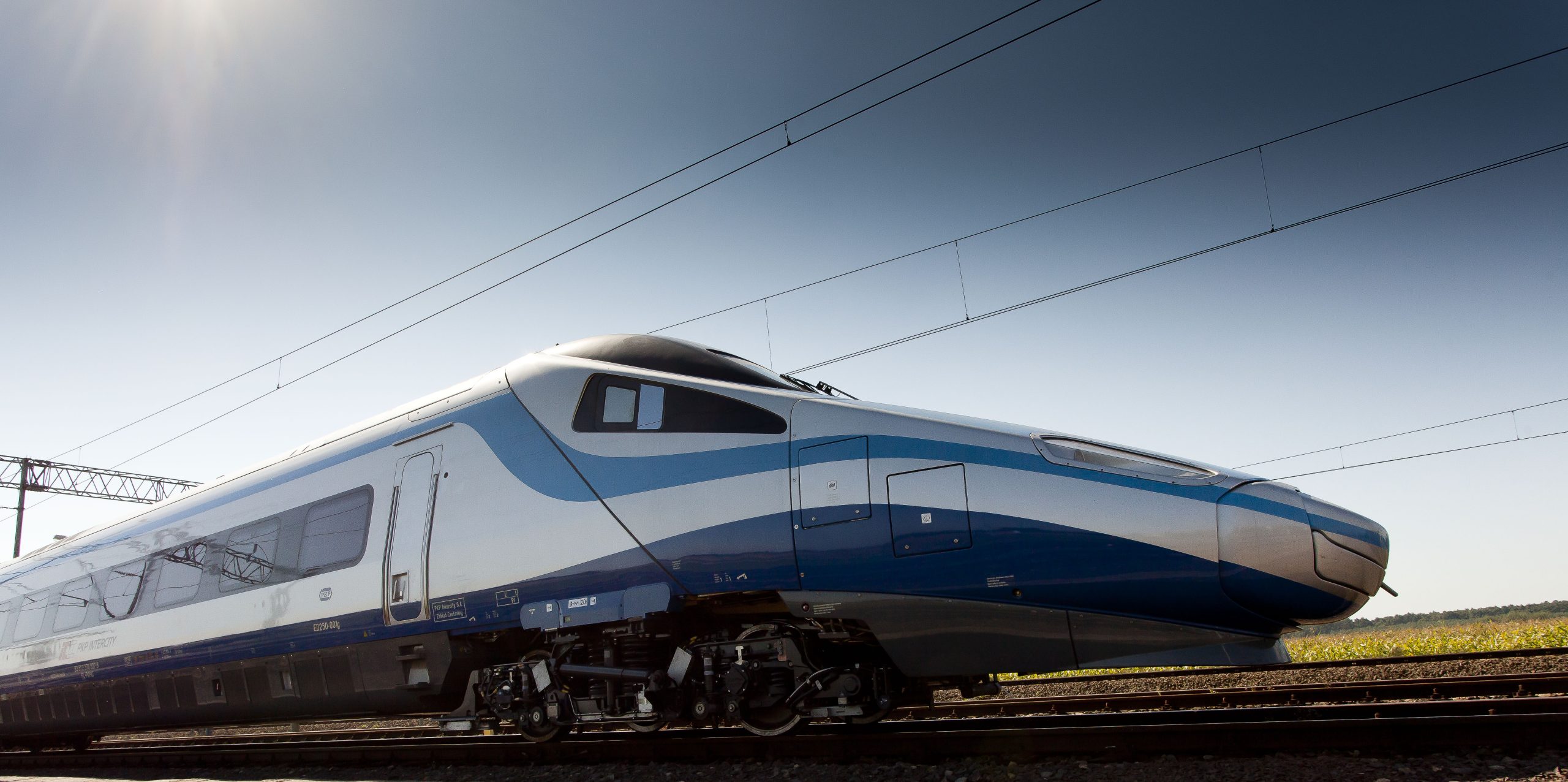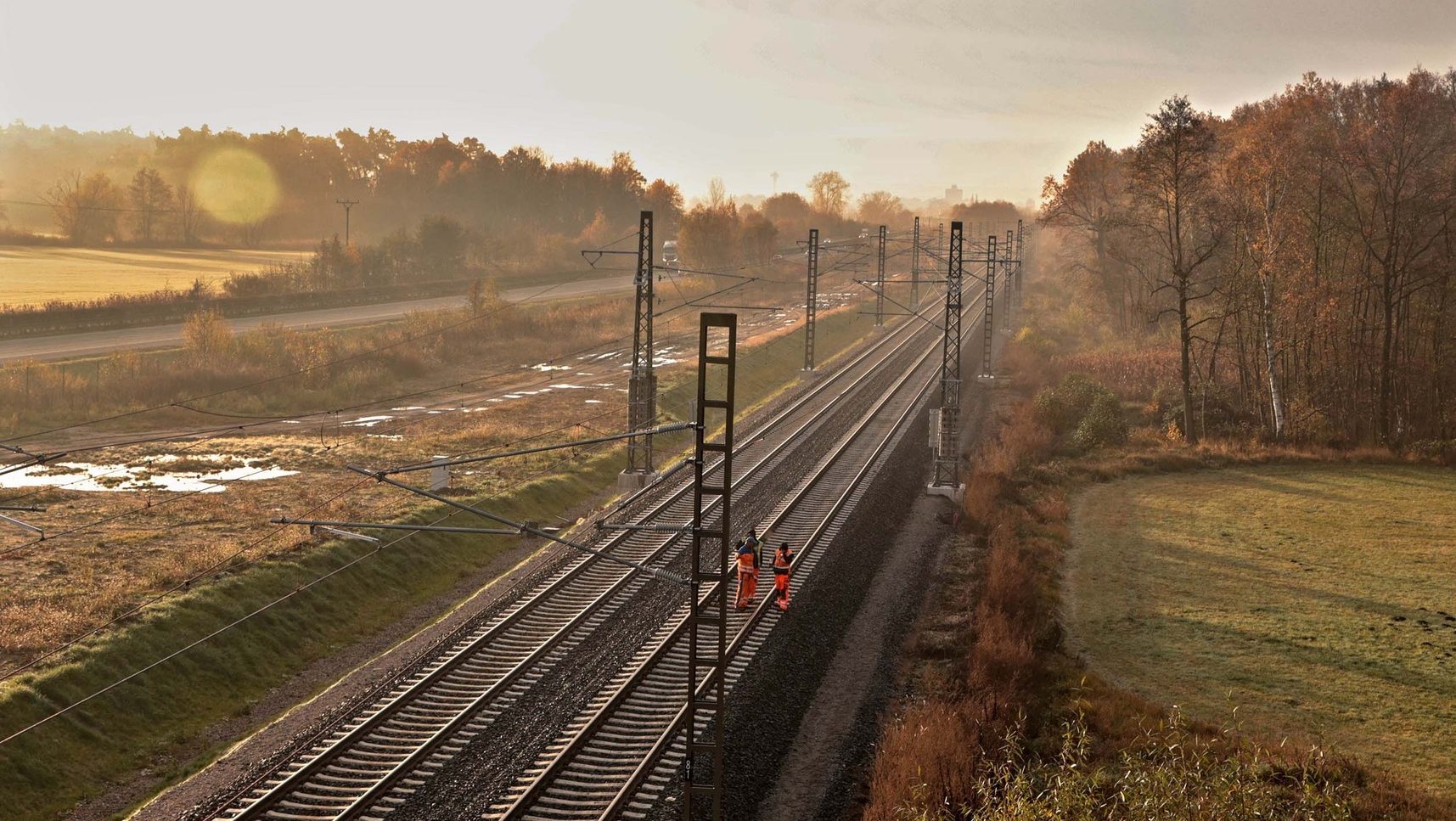The development of Europe’s high-speed rail network requires intensive collaborations, massive funding and significant efforts to implement construction plans and see them through to completion. The mobility strategy of the European Union places an emphasis on strengthening these transport services and constructing new lines, but they must be cross-border in order to be able to take over air traffic with a view to decarbonising the transport system. Fast and seamless connections with superior services and a high-performance infrastructure are the reasons that brought about the signing of an MoU in January in Warsaw to outline the new vision. Signed by CPK, Správa železnik (SŽ) and RB Rail AS, the agreement lays the foundation for a high-speed rail network in the Three Seas Region.
by Pamela Luica
Europe’s high-speed rail network is present in the West, but it is fragmented at the cross-border level, and the states that have such projects in progress are rather seen as national connections. On the other hand, the European countries that do not have the benefit of such a network, design their projects as part of the vision of connectivity with the European network to ensure their integration with a system that works. A new transnational plan emphasises the importance of cross-border connectivity by thinking about it as an integrated system not only from a technical point of view, but also from a travel point of view by integrating train timetables and creating a common tariff system for all passenger transport services (in the network) in order to cause more passengers to embrace this mode of mobility to the detriment of air transport. This plan is the high-speed rail network in the Three Seas region.
An interconnected high-speed rail network that provides attractive services which are competitive with air traffic, at affordable prices, is the vision of the European Union outlined by the Sustainable and Smart Mobility Strategy. It specifies that high-speed rail traffic will have to double in 2030, and it should triple in 2050. This objective cannot be achieved in the absence of an extensive network that integrates all the European states which, in turn, must be heavily involved in the construction of this system. High-speed rail line projects must be thought out and built as a “whole” and provide cross-border connections such as those currently underway, for example Lyon-Turin (connection between France and Italy), Brenner Base Tunnel (built between Austria and Italy), Dresden – Prague (Germany and the Czech Republic) or Rail Baltica (Lithuania, Latvia and Estonia). When they are completed, these projects will offer another dimension of European rail transport, connecting not only the states involved, but also impacting the rest of the network by providing connections to other cities.
According to the 2022 UIC High-Speed Rail Atlas, Europe’s high-speed rail network is operational on a total length of 11,990 km, with another 3,062 km under construction. The analysis further shows that there are plans for the construction of over 9,200 km, of which over 5,900 km are in the planning stage and over 3,300 km are part of long-term projects.
The Three Seas region formed by 12 EU Member States located in the area of the Baltic, Adriatic and Black seas has been created as an initiative with the aim of developing its infrastructure to ensure transport, energy and digital connections. For the region to stress its importance within the European transport system and to revolutionise the way the transport system works, an agreement has been recently signed for the creation of the high-speed network that will unite Estonia, Lithuania and Latvia, Poland, the Czech Republic, Slovakia and Austria.
During the Railway Direction Days 2023 (RDD 2023) conference that took place in January in Warsaw and was held by Centralny Port Komunikacyjny (CPK), the latter company, RB Rail AS and the Czech railway infrastructure manager Správa železnik signed a Memorandum of Understanding for the development of the high-speed rail network which will be based on the Warsaw – Łódź high-speed line developed by CPK, the Rail Baltica corridor and the V4 (Visegrad countries) high-speed line connecting the Czech Republic, Slovakia and Hungary (via Prague, Brno, Bratislava and Budapest).
“These rail projects are tailored to the needs of individual countries and the Three Seas region as a whole. The new HSR network, which is the CPK railway investment, together with other projects in the region such as Rail Baltica and V4, will form the future railway backbone of the Three Seas Region and an important part of European TEN-T transport network,” the Deputy Minister for Funds and Regional Policy, Marcin Horała, the government’s plenipotentiary for CPK said at the signing ceremony.
The region’s high-speed network will have 4,500 km of high-speed lines through the abovementioned underlying projects that are in various stages of implementation and are designed not only for links within the states involved, but further to Germany, with the potential of involving Romania and Ukraine as well.
Through joint efforts, a 1,700-km connection will be possible on the Tallinn – Warsaw – Katowice – Budapest route, and the Tallinn – Warsaw – Wrocław – Prague line could be 1,500 km long, including 400 km on spoke No. 9 developed by CPK which includes important cities such as Łódź, Wrocław, Poznań, Szczecin, Zielona Góra.
The new high-speed network in Poland will focus primarily on CPK investments, which will continue its connectivity with the Czech Republic, Slovakia and Hungary via the Katowice – Ostrava spoke No. 7 (spoke No. 7) line which will also be part of the V4 line. With the Baltic States, the connections will focus on the Rail Baltica corridor, with plans to concentrate on the connection with Poland through spoke No. 3 managed by PKP PLK (which crosses the regions of Podlaskie and Masuria) – and give particular concern to the well-known Białystok – Ełk section.
The main projects are being implemented and the first sections of the new network are expected to be put into operation somewhat in the same period (such as the case of Rail Baltica, the Warsaw – Łódź section or V4 line). After these lines become operational, the focus will also fall on making new connections available from Poland to the V4 line via the Katowice – Ostrava section and the Małopolska-Silesian Node.
In order to expand the high-speed rail network, there are further plans aiming at the connection to Ukraine via Lviv and Kyiv as part of the extension of spoke No.5 (crossing Lublin Voivodeship). The connection to Ukraine, even if it is not an EU Member State, is important because it is in line with the policy of extending the TEN-T corridors to the eastern part of Poland.
In this regard, during the RDD 2023 conference, CPK and Ukrzaliznytsia, the Ukrainian railway company, signed a three-year agreement aiming at developing new cross-border connections with European gauge (1,435 mm) and at laying the foundations for the concept of achieving a high-speed connection. The two parties have committed to prepare a feasibility study for a high-speed rail line on the Warsaw – Lviv – Kyiv axis that would allow trains to travel at 250 km/h. As part of the collaboration, CPK will provide support through the transfer of technical standards for the HSR infrastructure and the passenger transport model.
A working group will be created to focus on the abovementioned projects, to facilitate the exchange of experience so that the projects are carried out within the framework of the EU standards regarding the infrastructure and the signalling system, and to enable a future joint management model for the constructed lines. The two companies will try to identify financing opportunities through EU instruments.
“The agreement aims to improve railway links between Ukraine, Poland and the EU, facilitate passenger traffic, improve economic exchange and strengthen the safety of our transport corridors. I hope that cooperation with the CPK will bring us closer to the construction of the first HSR with a European gauge and will be an important step towards Ukraine’s integration with the EU,” Volodymyr Shemaev, the Director of the Office of International Projects of Ukrainian Railways said.
For the development of the network, a report performed by Steer for CPK has also been made public and it looks into the projects from the perspective of the infrastructure of the Three Seas region focusing on the concepts of integration and interconnectivity.
The concept that governs the future network aims at lines that allow trains to travel at speeds of 250 km/h and possibly 350 km/h, which do not exclude the combination of long-distance services with regional ones, based on national strategies.
“This is the unique, one-of-a-kind time in our common history when, functioning together in the region, we can create an unrivalled rail transport offering. We are drawing lessons from HSR investments in the West. As a result, our projects can bring about an economic domino effect, giving a boost to other industries and sectors,” Mikołaj Wild, CEO of CPK said.
Ultimately, the HSR rail system will be able to cover all the Three Seas Region countries and be ready for further development within Ukraine (extension of CPK ‘spoke’ no. 5 to Lviv and ultimately to Kiev). The development of the Poland-Ukraine HSR connection is part of the reconstruction plan for this country and the concept of extending the TEN-T corridors beyond Poland’s eastern border.
It is estimated that the construction works will take about 5 years and the costs of the projects to be implemented will amount to EUR 60.3 billion, with the largest portion of investments to take place in the period between 2025 and 2029, while the highest investment is expected to be made in the first half of the 2030s. In addition, operation and maintenance costs would be 0.5% of the initial investment cost, calculated on the basis of the feasibility studies carried out by the Czech Republic, which is planning its own high-speed rail network. Moreover, the costs regarding the assets reaching end of life in about 6 decades are estimated at 15% of the initial investment in the first 20 years and another 15% after a period of 30 years.
As a result of the analysis carried out by Steer, the costs reach EUR 61.5 billion, of which EUR 47.8 billion is the value of capital expenditures and EUR 13.7 billion represents the costs regarding operation, maintenance and renewal.
Conversely, the value of the benefits of the high-speed rail network amounts to EUR 119.4 billion, namely double the initial investment. The calculations show that the benefits translate into passenger travel time saving representing EUR 54.5 billion, followed by passenger cost saving of EUR 25.5 billion, and climate cost saving of EUR 16.3 billion. The rest of the benefits result in the reduction of accidents, congestion, pollution and noise levels.
The completion of the network will come with an overall reduction of travel time of 40-50 minutes. For example, on the route from Łódź to Wrocław, the travel time will be reduced by two hours, from 3 to 1 hour, from Warsaw to Vilnius, Ostrava and Budapest, the travel time will be reduced by almost half compared to the current time, and for the trip to Riga the benefits will be brought by a direct journey which currently does not exist.
According to the study conducted by Steer, the most congested line sections in Poland (Warsaw – Łódź), the Czech Republic (Brno – Jihlavain) and Hungary (Budapest – Győr) will carry between 14 and 18 million passengers per year.
Each plan has its international dimension
Centralny Port Komunikacyjny (CPK) is an ambitious project not only of Poland but also of Europe, consisting in the creation of a transport hub between Warsaw and Łódź through the construction of a new airport located 37 km from the Polish capital city and a new railway system consisting of 10 corridors for which the airport will be a shared destination and which will then go further to all regions of the country.
For the airport project, including the railway junction, CPK has submitted the documentation for the environmental decision, and the airport has entered the design stage.
On the railway segment, the CPK project includes a mix of high-speed and conventional lines created by the modernisation of 3,700 km of lines and the construction of 2,000 km of high-speed lines (called ‘spokes’) designed for speeds of 350 km/h. Feasibility studies have been developed so far for 1,500 km as part of the spokes. Investment variants have been announced for the first section of the Warsaw – Łódź high-speed line which will be 140 km long, for the Łódź – Wrocław line spanning 200 km and for the 40-km connection between Stalowa Wola and Rzeszów. The new section is part of the Łętownia – Rzeszów line and consists of the planned lines No. 58 and No. 632 to Rzeszów-Jasionka Airport. The route will be built as part of spoke No. 6 which will connect Warsaw and CPK with the south-eastern part of Poland to Sanok (Podkarpackie Voivodeship).
As part of the progress of the project, a EUR 150 million contract was signed with the Foster + Partners and Buro Happold consortium, which is responsible for the design of the passenger terminal building, the railway station and the public transport interchange.
Last year, CPK announced the investor variant for the Warsaw-Łódź high-speed line for which the design contracts were signed. The line, which will be the basis of the CPK railway system, will become operational in 2028, when the first stage of the airport will be inaugurated, and will allow passengers to get from Warsaw to the airport in just 15 minutes and from Łódź to the airport in 20 minutes. Construction preparation works will commence at the end of this year, and after obtaining the necessary approvals, the construction of the line will begin in 2024.
The line, part of ‘spoke’ No. 9 together with the section between Łódź, Wrocław and Poznań will form a ‘Y’ shaped line system which will halve the travel time from Wrocław to Warsaw and will reduce the journey time from Poznań to the capital city by one hour.
The 4-km high-speed railway tunnel in Łódź is CPK’s most advanced project for which it received the design approval for the consolidation works of the foundations of the Łódź House of Culture, located west of Łódź Fabryczna station, which will be the excavation chamber for the TBM. The tender was announced for this project and planning approvals are pending. The tunnel is an essential component of the ‘Y’ line and is an investment that, together with the construction of the suburban tunnel in Łódź implemented by the national railway administrator PKP PLK, will allow the increase of transport capacity to the Łódź Fabryczna station.
Rail Baltica is in full swing
The project covers the construction of 870 km of European gauge line connecting Estonia (with 213 km on its territory), Latvia (265 km) and Lithuania (392 km) and designed for speeds of 250 km/h. The line will connect the main cities of these states, running from Tallinn to Riga and Kaunas, from where a section will be built to Vilnius, and from Kaunas, there will be a cross-border connection to Poland.
Rail Baltica is at an advanced stage, where the design works have started for 640 km (out of the total of 870 km) and the launch of major constructions is going to follow. In September, Latvia launched the second stage of the tender in which five consortia are competing for the construction of 200 km of the line. The works that will start outside the Riga area are scheduled to commence this year and will be implemented on the corridor from Riga airport to the border with Lithuania and from the Salaspils intermodal cargo terminal to Lithuania.
Estonia’s tendering process for the construction of the main line is also well afoot, as in January 2023 it announced the tender for the construction of the second mainline section of 4.8 km, from the east side of Ülemiste. Contracts are expected to be signed this year for 30 km of line in Estonia, and in 2024 approximately 40 km will be under construction.
In Lithuania, in June 2022, the tender for design and design supervision services for the construction of the 78-km-long important cross-border Kaunas (Jiesia) section to the Polish border was launched. From Kaunas (Jiesia) to the border with Poland, the travel time will be about 20 minutes. This cross-border connection will allow services between Kaunas and Warsaw to take about 3.5 hours, and between Warsaw and Vilnius, about 4 hours.
Important steps are being taken for the global project as the three companies that will apply for the design and construction of the energy subsystem for the electrification of the entire corridor have been recently announced. The contract is to be signed at the end of this year and includes 2,000 km of catenary system, 4,350 copper materials and 50,000 masts.
In January 2023, RB Rail launched the tender for the design and construction of the control-command and signalling system along the entire line for which the contract will be signed in 2024. It includes ETCS, FRMCS, interlocking and block system, traffic management, SCADA, station equipment including CCTV, ticketing system, etc.
The Rail Baltica corridor will become operational from 2030, but the first sections will be put into operation in 2027.
“Considering the scale and impact of the Rail Baltica Global project not only in the Baltic states, but also the whole Europe, we must recognize benefits and use the full potential from strengthening cooperation with other megaprojects, each of them being unique. We are already cooperating with CPK and will be honoured to now extend the cooperation also with the national railway infrastructure manager in the Czech Republic,” Agnis Driksna, the CEO of RB Rail As said.
The V4 planned connections
The Visegrád group or V4 is composed of the Czech Republic, Hungary, Poland and Slovakia, whose total population is 63.8 million. The states agreed to form this initiative as part of a comprehensive integration plan within the European Union and to encourage the increase of the degree of cooperation and development with all states, especially with neighbouring ones.
In terms of transport, the V4 group will make efforts to complete the TEN-T core network by 2030 and supports the expansion of this network. Through a joint statement made in February 2022, the group specifies that this is “an important political signal to develop big infrastructure projects in the region of Central Europe, in particular high-speed railways and thus help us meet goals set out in the European Green Deal policy and in the Sustainable and Smart Mobility Strategy.” It should be noted that this statement places an emphasis on the importance of adequate European funding for the implementation of the projects and points out that a clear commitment is required from the EC that CEF funding in the future will tackle the projects on extended TEN-T core network. “We encourage the Commission to maintain a specific targeted allocation devoted to the significant cross-border rail projects between the Cohesion Countries in the next CEF III proposal.”
By means of the same document, the group also welcomes the expansion of the TEN-T network by including new elements regarding the future high-speed rail network that should create a connection in all V4 countries and potentially link the wider Central European region.
Along with other sectors that the V4 focuses on is the regional improvement, particularly the connectivity on the north-south axis, and the plans show that these states are working to create a high-speed network that will connect the capital cities of these four states.
The states are making good progress in their planning and construction of the high-speed railway network, which should have 800 km and will reduce the travel time by 7 hours, from the current 12 hours, to 5 hours.
The ambitious Budapest – Bratislava – Brno – Warsaw (via Katowice) high-speed corridor project was proposed in 2018 and it should be designed to allow speeds of 300 km/h. In 2019, the states signed a Joint Declaration for the creation of the Central European high-speed rail network to connect the capitals and important cities.
As part of the project in the Czech Republic, the line would follow its course from Brno to Ostrava – Olomouc, a route that is part of the country’s high-speed plans. In addition, Prague will be connected to the V4 line because the Czech Republic plans to build a high-speed network including the Prague – Brno route. In Hungary, from Budapest, the line will run through Győr, and from there, the rail connection to Slovakia and Austria will be ensured, which will allow the connection to the high-speed rail system of Western Europe.
In December 2021, the V4 High-Speed Railway Working Group (V4 HSR WG) presented the project concept to the Director General of DG MOVE, and he specified that the European Commission would be involved as an observer of the group. In June 2022, the group concluded that the project was making tangible progress.
The railway network currently connecting the capital cities of the four states is crossed by several TEN-T core network corridors, the completion of which is a matter of priority especially in ensuring the future high-speed corridor.
The project is expected to be completed in approximately 10 years.
The Czech Republic is on the right path
In 2017, the Czech Republic officially entered the map of high-speed line projects after the government approved the strategic programme that led to the preparation of several studies and analyses regarding the routes that would offer such services. The UIC High-Speed Rail Atlas 2022 analysis shows that the Czech Republic is planning high-speed rail lines with a total length of 832 km, and in the long term another 173 km would be constructed on three line sections.
At the country level, the network will be operated based on the “rapid connections” (RS) regime, which includes the construction of new high-speed lines (VRT in Czech or HSR) and the modernisation and transformation of conventional lines to be adapted to the high-speed concept.
The plans indicate five RS routes connecting the Czech Republic to Poland via two routes: from Prague to Katowice via Brno and Ostrava (RS1, which also has the HSR concept on the territory of the country) and from Prague to Wrocław (RS5). The Czech capital city would then also have two RS to Germany via Pilsen – Domažlice – Bavaria (RS3) and Ústí nad Labem – Dresden (RS4). Also, RS 2 will be the connection between Brno and Břeclav.
As far as the high-speed lines are concerned, the Czech Republic has five routes in preparation, some merging with the rapid connections. These are Prague – Brno – Ostrava (which merges with RS1), Brno – Rakvice, Prague – Ústí nad Labem – Dresden (same route as RS4), Prague – Louny (about 60 km north-west of the capital) – Most (70 km north-west of the capital) and Prague – Hradec Králové – Wrocław that merges with RS5 and will have a branch to Pardubice.
It should be mentioned that the high-speed line to Dresden is prepared in partnership with the German railway manager DB Netz, and the project of the line to the east of Prague is prepared as an interconnection with the V4 high-speed line.
In 2022, the Ministry of Transport approved the feasibility study of the Prague – Brno – Břeclav high-speed link, and in 2021, that of the Prague – Dresden line, for which in September 2022 SŽ selected the consortium for the development of the zoning decision documentation (DÚR) for the first section of this line, which will be 60 km long (namely Podřipsko HSR). Intense preparations are made in order to start this project with the German side, and recently, in a meeting with Jiří Svoboda, Director General of SŽ, Susanne Henckel, the State Secretary of Federal Transport Ministry, announced her support for the acceleration of the preparation and implementation of the project.
The project of the line to Germany (via Dresden) includes five segments, of importance being the Bohemian Central Mountains tunnel (17-18 km) and Ore Mountain (Krušnohorský) tunnel totalling 26 km of which 11.7 km in the Czech Republic; this is the most complex project of the high-speed network of the Czech Republic and through it connectivity will be ensured to the high-speed railway network of Western Europe.
In the case of the Prague – Hradec Králové/Pardubice – Wrocław high-speed line, the first section will be implemented at the same time as Prague – Brno, as both have a common section (VRT Polabí, of 29 km). From there, the section will be extended to Hradec Králové with the Pardubice branch which, together with the modernisation of the current line, will ensure the connection with Poland. Between Hradec Králové and Poland, the line will have a length of 50-60 km, depending on the variant to be selected.
The country’s high-speed network will have two links to the main connections of the states involved in the agreement, through the Hradec Králové section to Wrocław and Bohumín to Katowice, which will be put into operation after 2030.
The Czech Republic is directly interested in the new agreement because it is in the process of building its own high-speed network, and through the memorandum signed in Warsaw, it will be able to be part of a large system that provides increased connectivity. “The cooperation between railway infrastructure managers in the region is viewed by Správa železnic as a cornerstone for future rapid development in the 3Seas area. Given the long-term nature of these projects we understand we must not miss this crucial momentum to invest now in the future, as the positive benefits will be enormous not only for our countries but also for the whole of Europe,” Radek Čech, Director International Affairs Department of SŽ said.
Share on:









